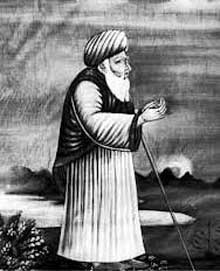Bhakti Movement In Medieval India
Bhakti movement was the direct result of the influence of the spread of Islam in India. Monotheism or belief in one God, equality and brotherhood of man and rejection of rituals and class divisions are the distinctive characteristics of Islam. These Islamic ideas created a profound impact on the religious leaders of this period. Moreover, the preaching of Sufi teachers shaped the thinking of Bhakti reformers like Ramananda, Kabir and Nanak.
Sufism
 |
| Khwaja Muinuddin Chishti |
Another well known Sufi saint was Bahauddin Zakariya who came under the influence of another famous mystic Shihabuddin Suhrawardi. His branch of Sufi saints was known as the Sufis of the Suhrawardi Order. Yet another famous Sufi saint was Nizamuddin Auliya who belonged to the Chishti order and who was a mighty spiritual force. These Sufi saints are revered even today by not only Muslims but by a large number of Hindus. Their tombs have become popular places of pilgrimage for both communities.
Information related to the search:
Bhakti Movement In Medieval India, india, bhakti, sufi, movement, history, medieval, chishti, famous, saints, saint, order, spread, islam, suhrawardi, sufis, preaching, influence, cult, ideas, sufism, khwaja, muinuddin

